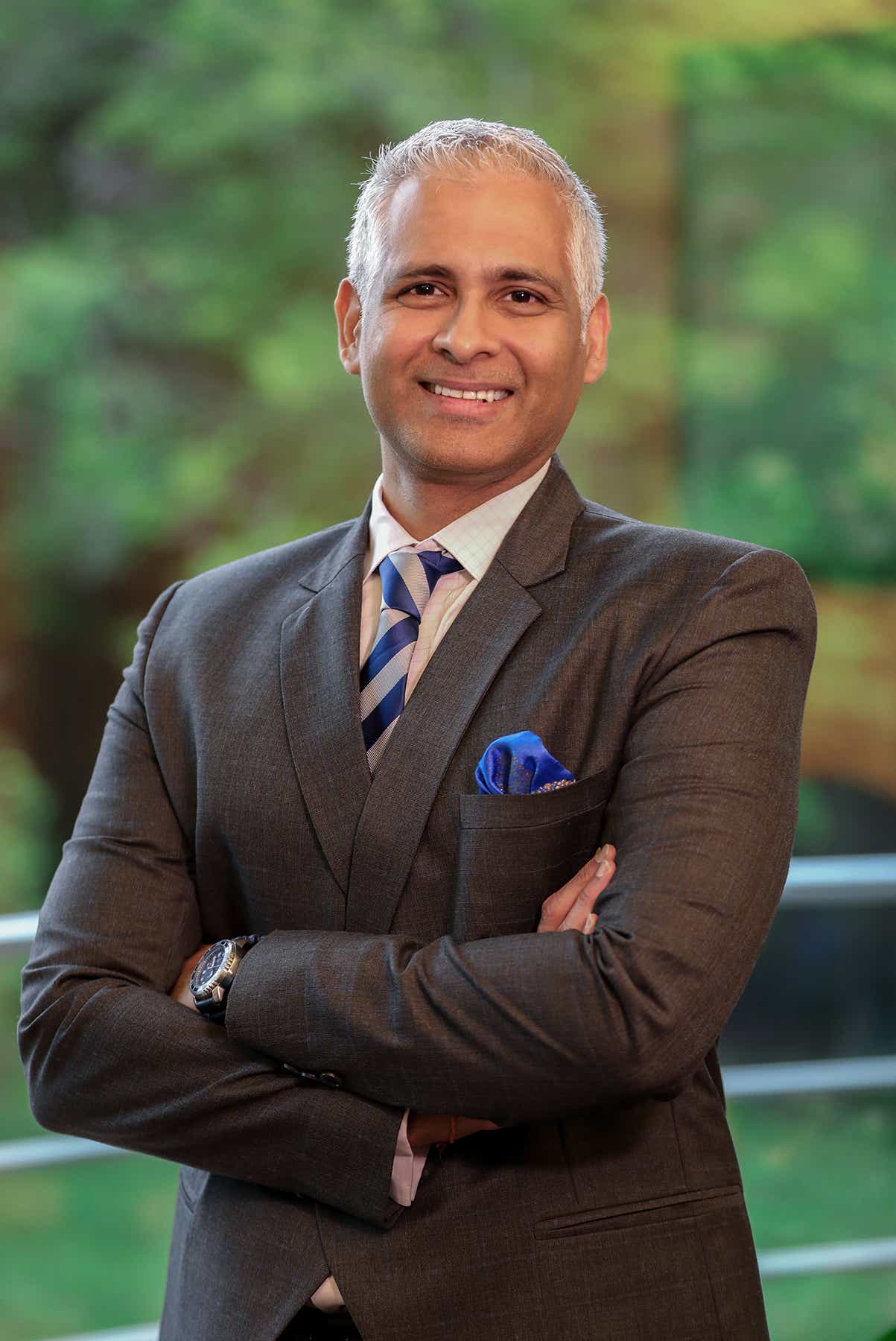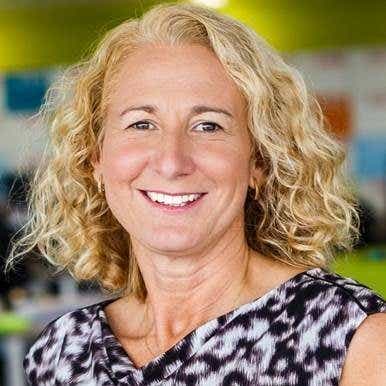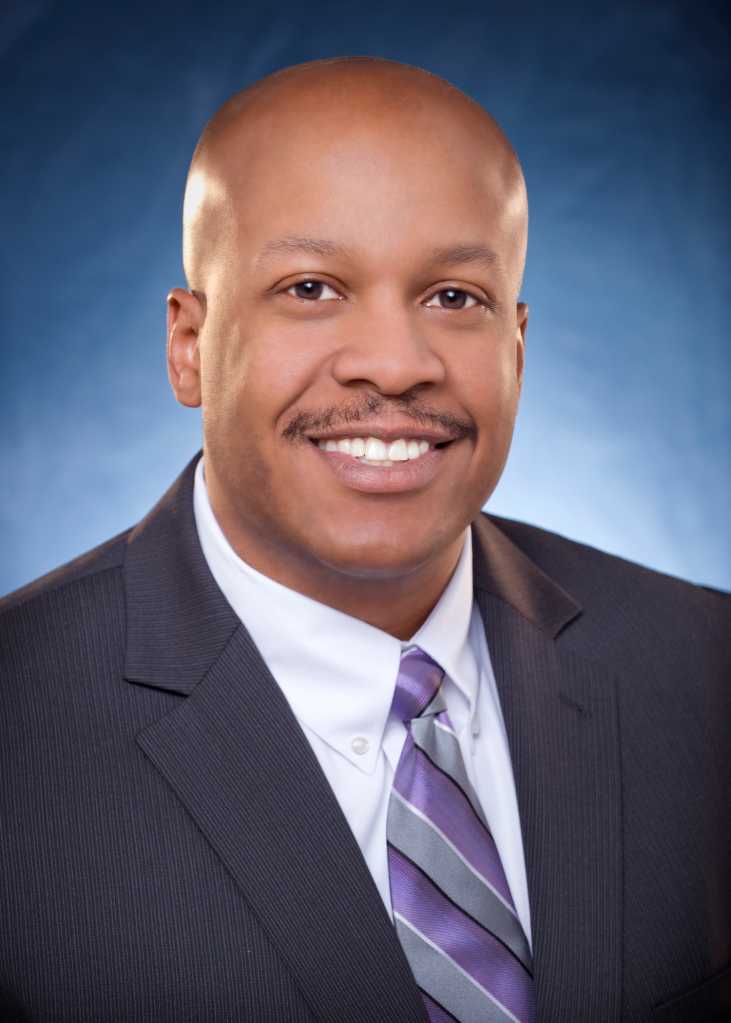- I recommend the Pixel 9 to most people looking to upgrade - especially while it's $250 off
- Google's viral research assistant just got its own app - here's how it can help you
- Sony will give you a free 55-inch 4K TV right now - but this is the last day to qualify
- I've used virtually every Linux distro, but this one has a fresh perspective
- The 7 gadgets I never travel without (and why they make such a big difference)
CIOs get strategic about IT talent retention

IT retention in healthcare has long been full of aches and pains because of the deep skillset required, but David Reis has been lucky.
Reis, CIO at the University of Miami Health System and Miller School of Medicine, has been able to grow his head count during both the pandemic and the Great Resignation, a feat he attributes to the fact that people who work in healthcare tend to be mission-driven.
To help foster that pride, during monthly IT townhalls he conducts, Reis makes sure to connect the projects IT is working on with the organizational mission of delivering the best, most user-friendly, and secure technology. But there’s another component to retention at the health system that may be the most meaningful: the ability to bring that cutting-edge technology to the community, which oftentimes includes staff members themselves and their families.
“We’re also patients of the health system and our families are getting care here, so we can tie that to how new technology directly impacts them,’’ Reis says. As an example, he cites the ability to use the patient portal to schedule COVID vaccines electronically. “There’s power in the work, and in understanding the value that the work brings to our local community.”
David Reis, CIO, University of Miami Health System and Miller School of Medicine
University of Miami Health System and Miller School of Medicine
Reis’ enthusiasm for his work is reflected in his office decor. On a table sits Sebastian the Ibis, a tall, thin white bird with a long nose who is the mascot for the University of Miami. The flag of the US Marine Corps, where he served for eight years, hangs on a wall. It was in the corps that Reis learned about esprit de corps, the Latin phrase for pride of belonging to a particular group.
Staff retention can often be a CIO’s Achilles’ heel. A new Gartner survey finds that because they are in high demand, only 29% of IT workers globally intend to stay at their current job. But Reis’ approach has been a step in the right direction. Other organizations are taking innovative measures beyond compensation and flexible work schedules to retain IT talent. These range from weekly chats and rotation programs to working on exciting tech projects and implementing a mental fitness program.
Sundays with the CIO
Staff retention looms large for Nimesh Mehta, CIO at National Life Group. Even though Mehta has had a 97% retention rate over the past five years, he doesn’t take that for granted. “Last year, we were talking about the war for talent, and I said, ‘I think it’s over because talent won; no two ways about it.’”
Mehta has a team of several hundred people. As opportunities for advancement grow, things people used to value in the past may not be what they value now, he says. And while National Life offers fair compensation, “at some point, it will be too high for me to compete in the market. Once you cross the 20%, 30% barrier in terms of salary increases, people can’t say no to a new job,” he says.
So Mehta has deployed a few tactics. He makes sure his people have consistent development and a career path, and that they’re working on the latest and greatest technologies to keeps them engaged.

Nimesh Mehta, senior vice president and CIO, National Life Group
National Life Group
Since March 2020, when the pandemic began, Mehta has been doing something he admits may sound strange. Every Sunday, he sends a note to his entire team discussing what he’s learned from mistakes he has made.
For example, one note recalled the time Mehta was recruiting someone who had a different personality than his. “I didn’t pause to appreciate their personality type so I lost someone who may have been a good addition to the team,” he says. The purpose of the note was for Mehta to let his teammates (he doesn’t use the word staff) know he was looking inward to figure out how he was going to learn from this experience and apply empathy to his interview style.
“I answered the question by showing in the email … research my high school son has done on interviewing,’’ he says. “Some of the techniques are to take pauses and process what is being said and give candidates 30 seconds to come up with responses, and … allowing them to have more thoughtful detail in their responses.”
The message to the team was to understand that just because a person has a different personality type doesn’t mean they should be automatically dismissed and Mehta’s recognition that the interview process needs to be humanized.
Mehta hasn’t missed a Sunday note.
Rotating for retention and reworking rewards
Another step Mehta is taking in part aimed at retention is to encourage IT staff to perform rotations outside the IT department so they can become experts in areas they might work on in the future. His own journey to CIO started by working in three different departments at National Life Group.
Quite a few people have taken advantage of the rotations, he says. Mehta is also working to help change the company’s rewards and recognition program. “What we’re finding is people want to be rewarded in different ways, not just [receive] annual bonuses,’’ he says. Leadership is trying to figure out how to revamp the program to meet the needs of individuals and not just teams, he says.
People have also expressed loud and clear that they don’t want to be in the office five days a week. Mehta accepts that, but believes it is a hindrance to innovation.
“What we found is people working remotely are extremely productive, there’s no doubt about that, but we’re not innovative,’’ he says. “I asked my teams the question, ‘Give me one thing you implemented in the last two years that you didn’t think of before that?’ and I got crickets.”
IT teams are used to being together, whiteboarding and collaborating, he says. “One of the best ideas I got from someone was while I was grabbing a cup of coffee.’’
Leave your stripes at the door

Lesley Salmon, SVP and CIO, The Kellogg Co.
The Kellogg Co.
After getting feedback from his teams, Mehta has taken pains to create a culture of openness to intellectual debates. “You leave your stripes at the door and you don’t have to worry about the consequences,’’ he says. Teammates are purposely told that if they have a point of view on something, they should share it, because “we need diversity of thought to make a good business decision.” Then others in the company can debate ideas brought to the table.
People value this and they feel heard, Mehta says. “Not everywhere do you get the chance to say, ‘Nimesh, what were you thinking? That was an idiotic move. We don’t agree.’ People have actually been very straight with me.”

AJ Sunder, CIO and CPO, RFPIO
RFPIO
Kellogg CIO Leslie Salmon also believes teams should be encouraged to express their views and opinions. For example, when a proposal is on the table, “stand back and say, ‘Make it better,’” she says. “This sets a positive tone for challenge … [and it] is so much more constructive than saying what is wrong with a proposal.”
Being humble is also key. “We do not adhere to hierarchy and tenure when it comes to challenging people,’’ says AJ Sunder, CIO and CPO at RFPIO, a vendor of cloud-based software for automating the RFP process. “If we believe someone is capable of doing something, we let them take on the challenges, providing adequate support and guidance.”
This has allowed RFPIO’s team members to grow and thrive faster than they would in more traditional places, Sunder says.
Mental fitness program
Early in the pandemic, David McLeod, vice president and CISO at Cox Enterprises,

David McLeod, vice president and CISO, Cox Enterprises
Cox Enterprises
recognized that people were hurting. “Certain thinking styles and mental fitness levels were robbing me and my team of the ability to be creative, productive, energetic, and influential throughout the week,’’ McLeod says. “It was shocking to see talented people unable to get through work demands and interactions without needing days of recovery.”
On a small team, the productivity of every member has a noticeable impact, he adds. In cybersecurity, the workload and unexpected demands can be depleting. So in July 2021, McLeod’s team began requiring “mental fitness training for leaders.”
Cox implemented a mental fitness program that leverages The Hermann Brain Dominance cognitive model and the Positive Intelligence theory. Both have created “routine language on our team to make sure we are using a whole-brained approach and sage voice to steer the energy and productivity amongst ourselves and our customers,’’ he says.
Every team member who participated in the six- to eight-week training increased their productivity and performance while reducing their anxiety, because they learned to anticipate, overcome, and recover from the events of the day, McLeod says.
Continuous development
In 2020, Kellogg conducted a global opinion survey that revealed employees “weren’t finding enough opportunities to develop, learn, and grow in the IT function,” Salmon says. To emphasize that there is a place for personal development and life-long learning, the company unveiled its YOD-Always (Year of Development Always) program.
A number of tracks were created for technical training and career strategies and virtual programs around how to best use the company’s vast set of data and analytics to break down silos, Salmon says. In February, Kellogg hosted the first YOD-Always Growth Fest. It included 10 optional sessions built around the topics leadership “knew mattered to colleagues and are designed to support their needs — whether that’s creating more impact in their current role or working toward the next step in their career,” she says.
Kellogg is focused on further opportunities for talent movement by “significantly moving the dial this year with a number of promotions and lateral moves across all levels of our function,” Salmon says.
Talk isn’t cheap
Reis believes in connecting purpose with showing the value of the work IT does. To that end, he has set up “coffee talks” where people can drop in and discuss anything. Reis did those about twice a month for nearly a year prior to the pandemic. Now the staff of roughly 300 are invited to monthly open Zoom sessions with Reis and other IT leaders to talk about whatever is on their minds.
“It’s light and it’s a way for us to use the time to pressure test some ideas and give people an opportunity to probe up whatever they want,’’ he says. The goal is to produce “authenticity of discussions.”
The monthly town halls have a more formal agenda and are used to convey information. A portion of the time is used for IT teams to tell their stories about how they were about to implement new technologies and enable digital healthcare delivery “rather than talk about the risks and why we can’t do something,’’ Reis says. “So you see them get energized, and they’re seen in a different light by their colleagues.”
Both efforts are successful, as evidenced by a participation rate above 90%, he says.
Mehta agrees that the power of individual conversations has an impact. “I meet one on one with everyone globally,’’ he says. “It’s a lot of time for me to do that, but I didn’t realize how much people value a direct line of sight and open door conversation with their CIO.”
The retention measures that work, and ones that don’t
What doesn’t work is believing that competitive pay, job stability, and location are the top tools for talent retention, says McLeod. “What works is to be a great employer, be a great leader, be creative in solving for the needs of modern technology professionals,” and stay adaptable.
Reis’ advice is simply to ask the team what they want. “Be a servant leader and don’t assume you know what will help them be successful.”
Salmon echoes that, saying that a key purpose of the CIO’s leadership team is to serve the overall IT function. “You are aiming to create a high performing team, to be the best leaders possible for your overall IT function who in turn, will deliver amazing business value.”
Be transparent about that and survey the broader team to get a baseline of how leadership is perceived and a view on what they can do to support the function and measure progress over time, she adds.
Like in most situations, it’s important to have both one-on-one and team conversations. “Encourage the conversations to happen in the meeting, not after the meeting,” Salmon says.
Sunder says leadership should embrace common-sense practices such as respecting employee input, recognizing contributions and being mindful of welfare and work-life balance.
“In addition, we go out of our way to truly understand what motivates our team members by not only taking sincere interest in their career goals and aspirations, but also helping them toward those goals in any way we can,” Sunder says.
A good leader also knows how to connect people, Mehta says, and he sees the business world moving from teams to the concept of teaming. Mehta uses the analogy of sports teams that practice together and play games together as being a team. In contrast, teaming is about people who have never worked together before joining forces with a clear purpose and vision of what needs to be done.
“I have set up a team with deliberately different personalities in IT and at first, people hated it, but eventually they realized they were valued because what they brought to the table was different from the others, and everyone respected that value,’’ he says.
Finally, he says that “old school leadership doesn’t work. People are not looking to be led from the front anymore. They’re look for leaders that are part of their world.” Mehta notes that people don’t leave companies, they leave managers and leaders. “So who you are as a leader will really dictate your retention rates.”

